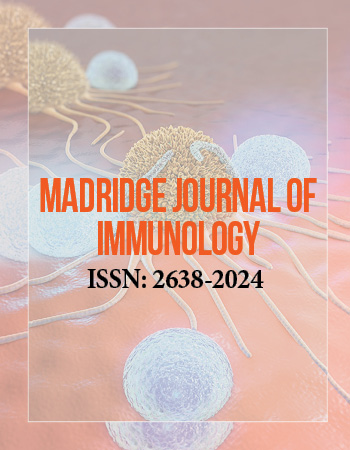International Conference on Immunology and Immunotechnology
November 1-3, 2017 Barcelona, Spain
Punicalagin, a PTP1B Inhibitor, Induces M2c Phenotype Polarization via Up-Regulation of HO-1 in Murine Macrophages
1Beijing Hospital of Traditional Chinese Medicine, Capital Medical University, China
2Beijing Institute of Traditional Chinese Medicine, China
3Beijing Key Laboratory of Basic Research with Traditional Chinese Medicine on Infectious Diseases, China
Punicalagin (PUN) is the most abundant ellagitannin in pomegranate, a well-documented traditional Chinese medicine used for inflammatory diseases. We reported that PUN possesses considerable anti-inflammatory and anti-oxidant properties; However, its direct targets have not yet been reported. Here, we demonstrated that Protein Tyrosine Phosphatase-1B (PTP1B) serves as a direct target of PUN, with IC50 value of 1.04 µM. Results from NPOI further showed that the Kon and Koff of PUN-PTP1B complex were 3.38e2 M-1s-1 and 4.13e-3 s-1, respectively. The active site Arg24 of PTP1B was identified as a key binding site of PUN by computation simulation and point mutation. Moreover, inhibition of PTP1B by PUN promoted an M2c-like macrophage polarization and enhanced anti-inflammatory expression, including IL-10 and M-CSF. Based on gene expression profile, we elucidated that PUN treatment significantly up-regulated 275 genes and down-regulated 1059 genes. M1 like macrophage marker genes, such as Tlr4, Irf1/2, Hmgb1, and Stat1 were down-regulated, while M2 marker genes, including Tmem171, Gpr35, Csf1, Il1rn, Cebpb, Fos, Vegfα, Slc11a1, and Bhlhe40 were up-regulated in PUN-treated macrophages. Hmox-1, a gene encoding HO-1 protein, was preferentially expressed with 16-fold change. Inhibition of HO-1 obviously restored PUN-induced M2 polarization and IL-10 secretion. In addition, phosphorylation of both Akt and STAT3 contributed to PUN-induced HO-1 expression. This study provided new insights into the mechanisms of PUN-mediated anti-inflammatory and anti-oxidant activities and provided new therapeutic strategies for inflammatory diseases.
Biography:
Xu Xiaolong was born in 1988, China. He received M.S.A and D.S.A from China Agriculture University in 2012 and 2015, respectively. Now he is a research associate in Beijing Hospital of Traditional Chinese Medicine and Beijing Institute of Traditional Chinese Medicine. He is also a research fellow in Beijing Key Laboratory of Basic Research with Traditional Chinese Medicine on Infectious Diseases. His main research interest is natural plant extract on inflammatory diseases including Sepsis, IBD, Shock and so forth.


